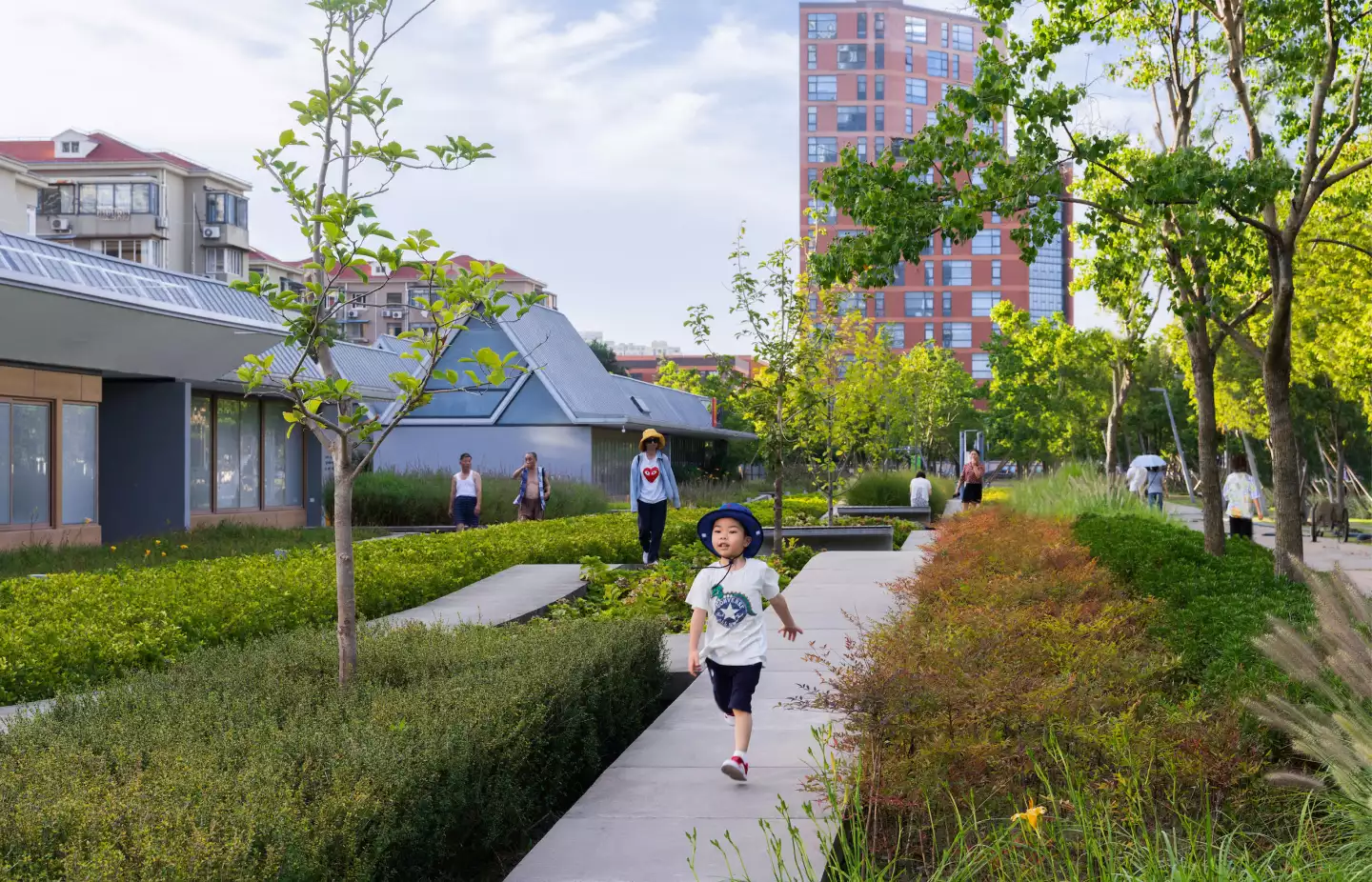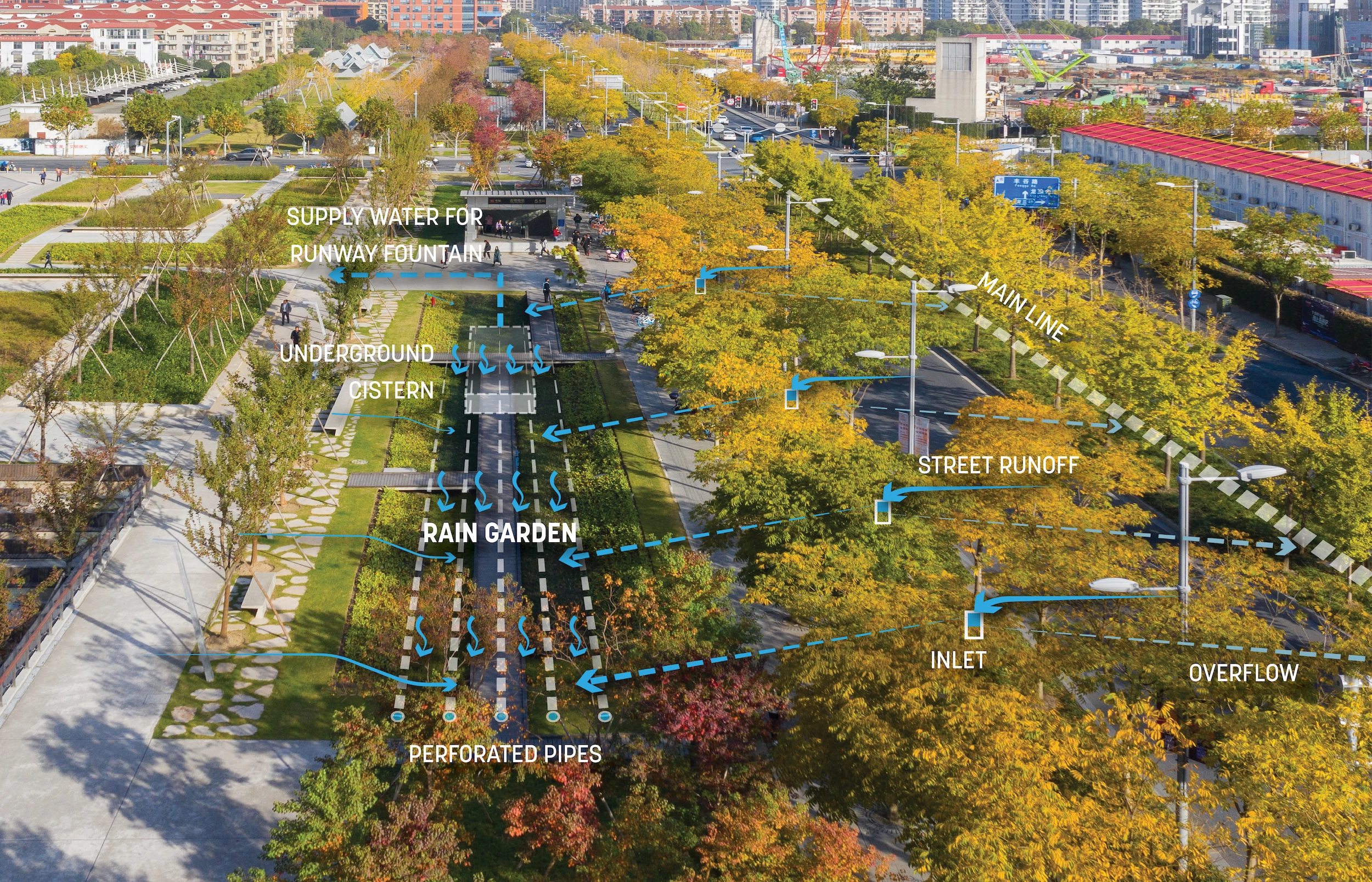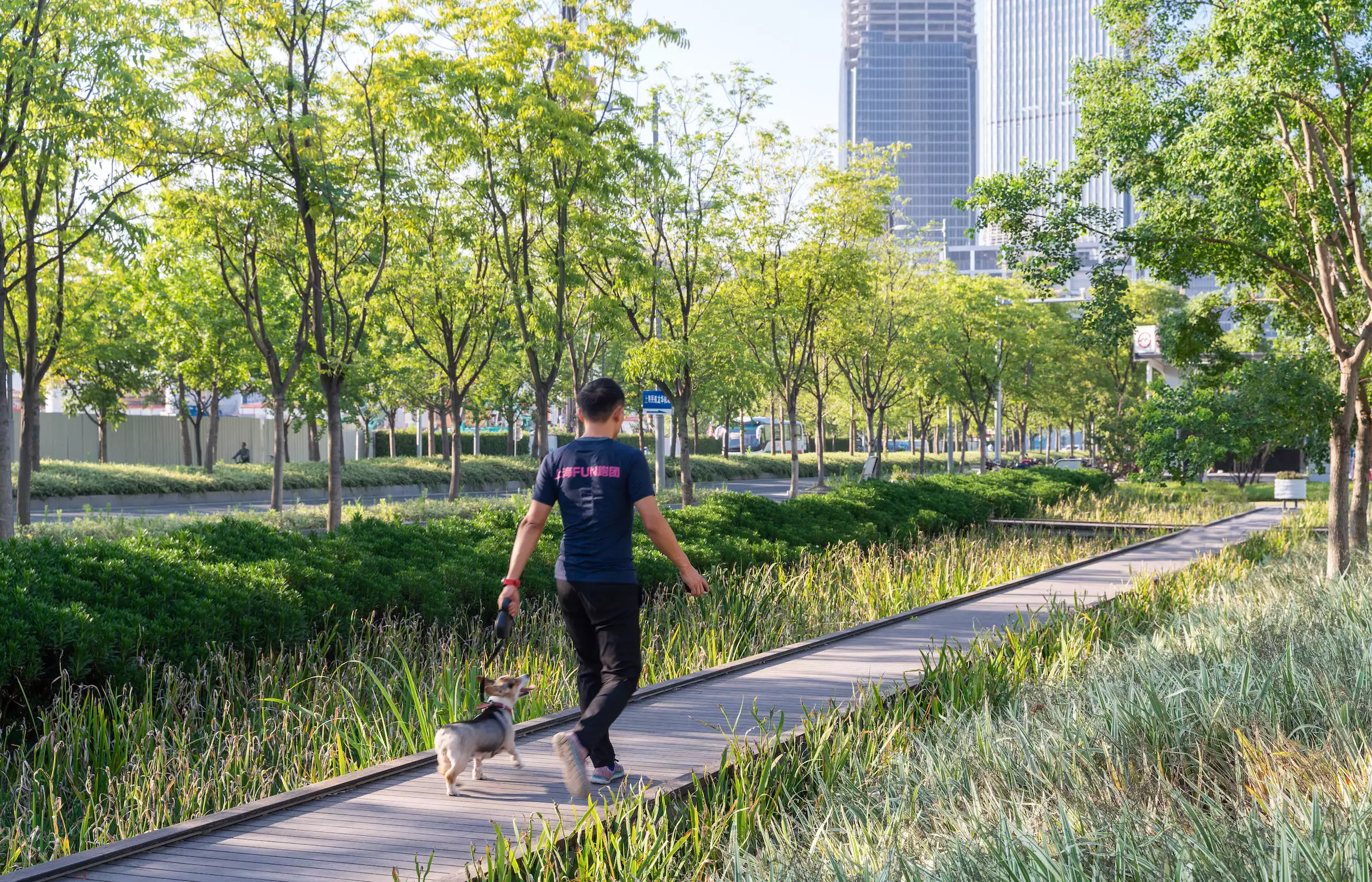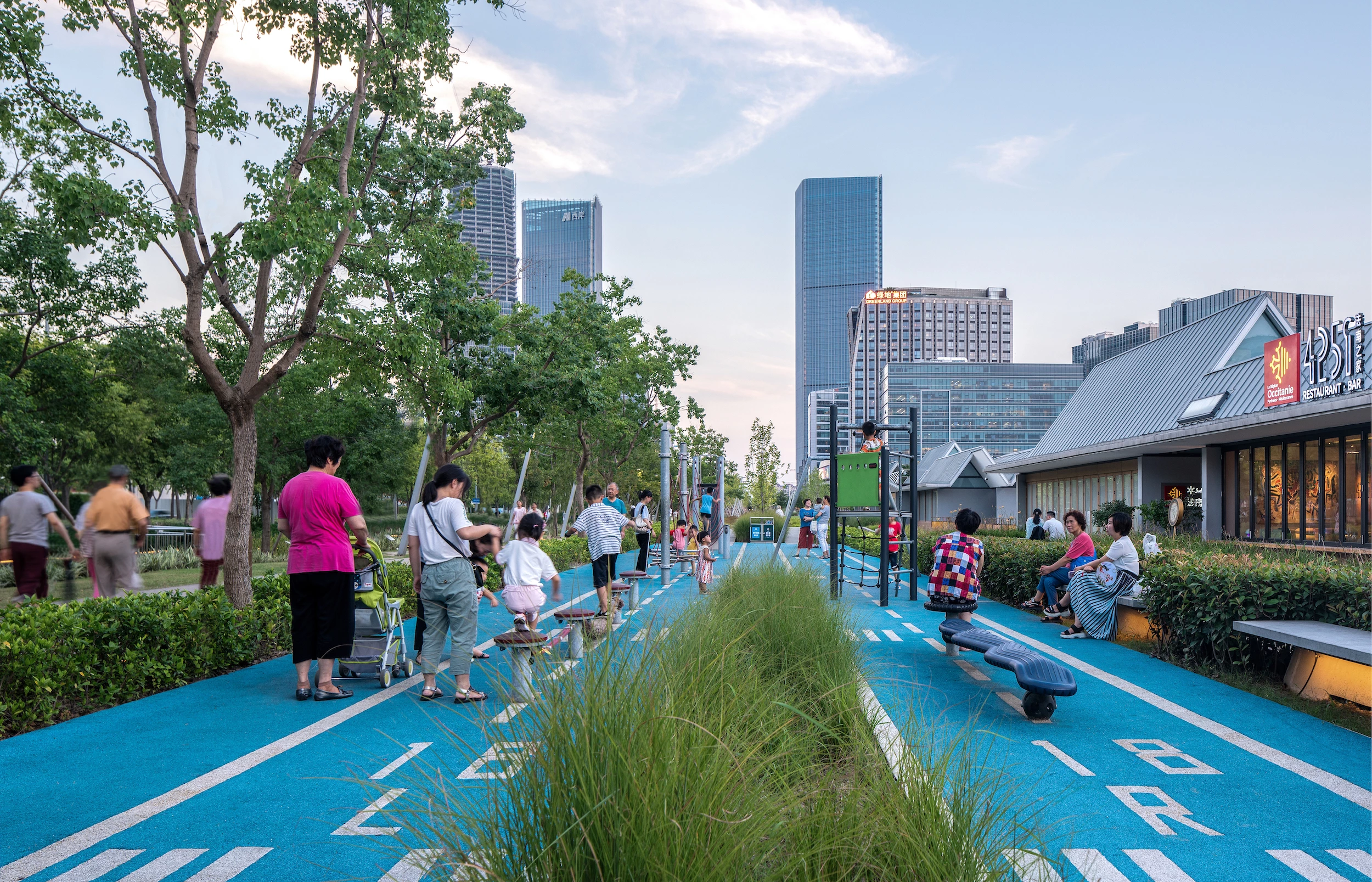Sasaki has transformed a dilapidated airport runway in Shanghai, China, into a large public park. The project retains elements of the original airport, while integrating sustainable design like recycled materials and a rainwater collection system.
The Xuhui Runway Park is situated on what was once Shanghai's Longhua Airport and measures 14.63 hectares (roughly 36 acres). The airport closed in 2011 and happens to be the same site that OPEN Architecture used to turn fuel storage tanks into an art gallery. Rather than try to completely erase its past, Sasaki decided to lean into it, using the runway as a source of inspiration.
"The park integrates portions of the original runway concrete where feasible to prolong the site’s memory," explains Sasaki, which is also the firm behind the ambitious Forest City Malaysia development. "The design team identified a row of 3.6-m (11.1-ft)-wide structurally sound runway panels to serve as the main pedestrian path of the park, with its original direction markings preserved. Near the north end, big portions of the runway concrete are integrated into the birdwatching grove to form intricate resting spaces. All new pavements and site furniture are made of architectural concrete, with variations accentuated at key spots. The profile of the site furniture is designed to recall the elements of the aircraft."

A playground, footpaths, fountains, and multipurpose lawn have some minor aircraft-inspired additions (Sasaki says the lighting is shaped to resemble airplane wings, for example). Elsewhere, cultural events and performances can be accommodated in a large 900-person sunken garden, and there are cycle paths, restaurants, and shared seating installed.
A series of wildlife habitats have been created too, including a birdwatching grove, butterfly garden, and wild gardens, with a total of 82 local plant species and 2,227 trees planted on site. Rainwater from the park and a nearby road is captured into a collection system, filtered, then fed into the water features. Recycled materials were used and sustainably-sourced bamboo was chosen as an alternative to hardwood. Additionally, all lighting is energy efficient LED lighting and the project recently won a Chinese green building award.
This kind of project is quite popular at the moment and other notable examples of adapting aged infrastructure for public use include the transformation of a 1970s Seoul highway into a park and the famous New York City High Line.
Source: Sasaki











